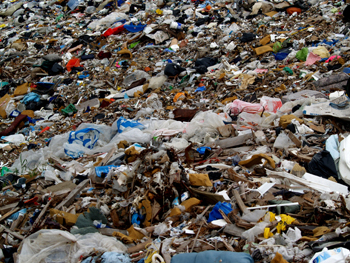Natural Fungus That Eats Our Trash
There are millions of people on Earth who litter and think nothing of it. Biodegradable items such as banana peels are kosher, as they usually disappear in under a month. One of the peskier items to be littered is plastic. Plastic has plagued scientists, due to it’s lingering nature and it’s inability to be properly disposed of. It is feared that it can take anywhere from 500-1,000 years for plastic to decompose in landfills.
Countless consumer items are based out of plastic, many we don’t even realize are a plastic. In this disposable day and age where items quickly lose their value and we toss them we buy more, the question of where all of the mounds of trash worldwide will go has been a plaguing concern. We may be on the right path to solving this issue. A group of students and professors from Yale made an astounding discovery this month; uncovering a fungi that eats pesky plastics to survive.
This fungus, known to scientific minds ad pestalotiopsis microspora, exists naturally in the Amazon rainforest. It can survive on plastic (polyurethane specifically) alone, and can amazingly thrive in environments with or without oxygen. This last fact is important because many landfills are so compact that there is little to no air to operate.
This discovery is a form of what is known as bioremediation or the “use of microorganisms to biodegrade and eliminate pollutants in the environment.” The problems presented by plastics have only recently begun to be understood. Prior to this discovery, drastic steps have been taking place to reduce the use of these plastics. For example, plastic bags have been banned at many grocery outlets as early as 2007. Planet-conscious manufacturers have been looking for other materials to serve their purpose.
The story sounds too good to be true, but is it? Being such a recent discovery, there is still a lot of research to be conducted. It remains to be seen whether or not the fungus gives off any dangerous or harmful byproducts after it digests the plastics. A resulting Co2 emission could certainly negate the positive effects. How easy would it be to implement this fungus in all of the landfills worldwide? While certainly an encouraging step, it’s still too early to tell if this is a long term solution.
Here is a list of some plastics that could be affected by this discovery.
How long does it take most objects to decompose?
Banana Peel: 3-4 weeks
Paper Bag: 1 month
Cardboard: 2 months
Wool Sock: 1 year
Tinned Steel Can: 50 years
Aluminum Can: 200-500 years (But if recycled, it can be reused within 6 weeks!)
Plastic Bags: 20-1000 years
Glass: 1-2 million years
Styrofoam: 1+ million years
Now we just need to discover a fungus that enjoys eating styrofoam and glass.
Comments
Tags: bioremediation, fungus eats plastic, Pestalotiopsis microspora
Trackback from your site.



Comments (3)
CrookbythaBOOK
| #
This does sound too good to be true. I doubt this tiny little fungi would be able to keep up with our insane rates of consumption and dumption.
Reply
Edible Packaging | ASTOUNDE.com
| #
[...] are a huge problem in the U.S. and worldwide. Scientists may have discovered an innovative way to dispose of much of the plastic, but a lot of trash still [...]
Reply
Maven
| #
A fungus that can survive on plastic? That doesn’t sound very natural; in fact it sounds like the making of the “blob” or something equally frightening. I think the fungus would really need to be contained, so perhaps encapsulate the garbage along with the fungus and periodically push more garbage in, carefully closing the capsule off again. The time could be managed based on how long it takes to reduce the garbage.
Reply